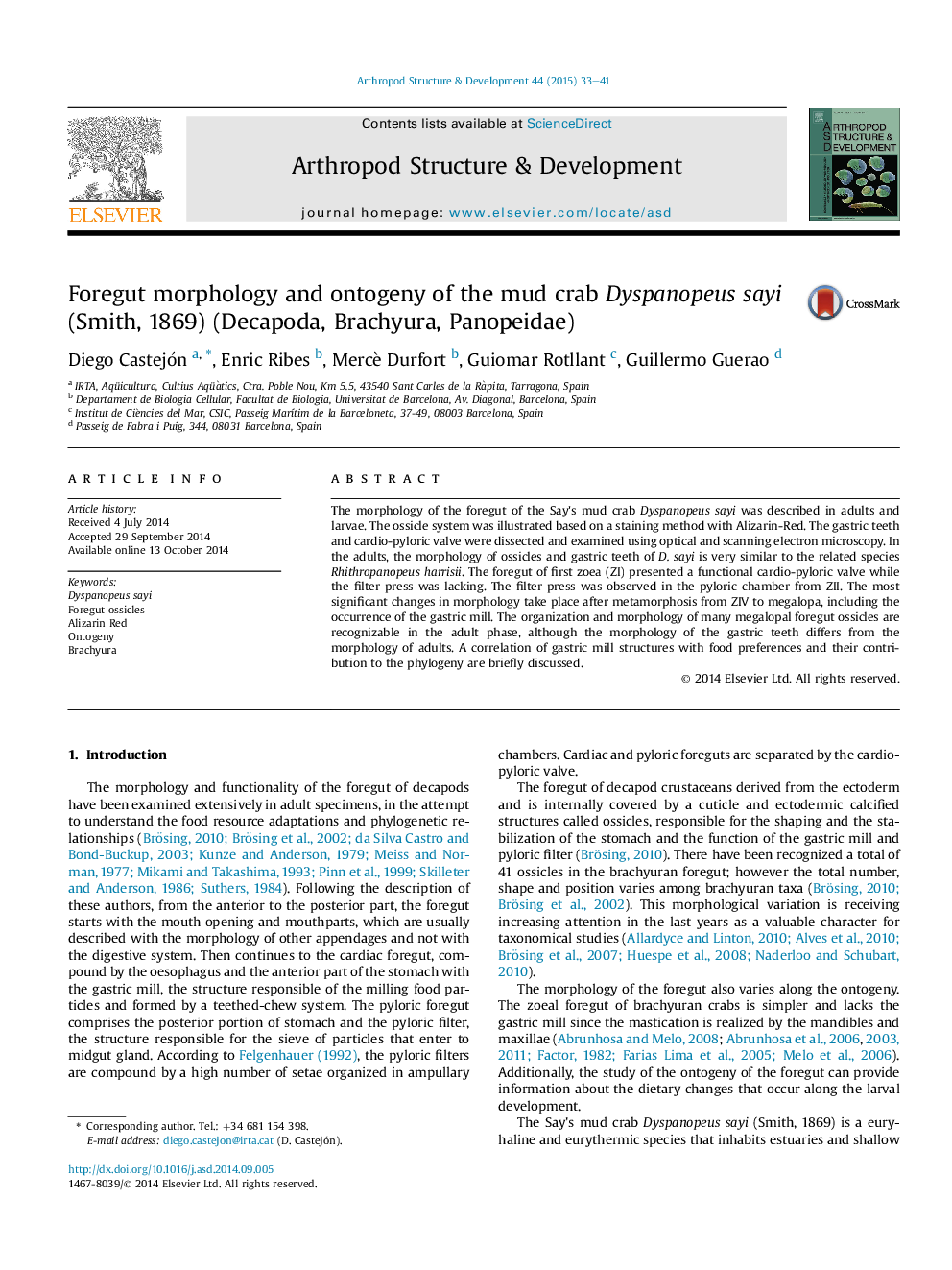| Article ID | Journal | Published Year | Pages | File Type |
|---|---|---|---|---|
| 2778525 | Arthropod Structure & Development | 2015 | 9 Pages |
•Morphology of the foregut changes drastically along the ontogeny.•The complexity of foregut increases in subsequent life stages.•Gastric mill and ossicles appear from megalopa stage.•Changes in foregut teeth may be related to changes in the feeding strategy.
The morphology of the foregut of the Say's mud crab Dyspanopeus sayi was described in adults and larvae. The ossicle system was illustrated based on a staining method with Alizarin-Red. The gastric teeth and cardio-pyloric valve were dissected and examined using optical and scanning electron microscopy. In the adults, the morphology of ossicles and gastric teeth of D. sayi is very similar to the related species Rhithropanopeus harrisii. The foregut of first zoea (ZI) presented a functional cardio-pyloric valve while the filter press was lacking. The filter press was observed in the pyloric chamber from ZII. The most significant changes in morphology take place after metamorphosis from ZIV to megalopa, including the occurrence of the gastric mill. The organization and morphology of many megalopal foregut ossicles are recognizable in the adult phase, although the morphology of the gastric teeth differs from the morphology of adults. A correlation of gastric mill structures with food preferences and their contribution to the phylogeny are briefly discussed.
